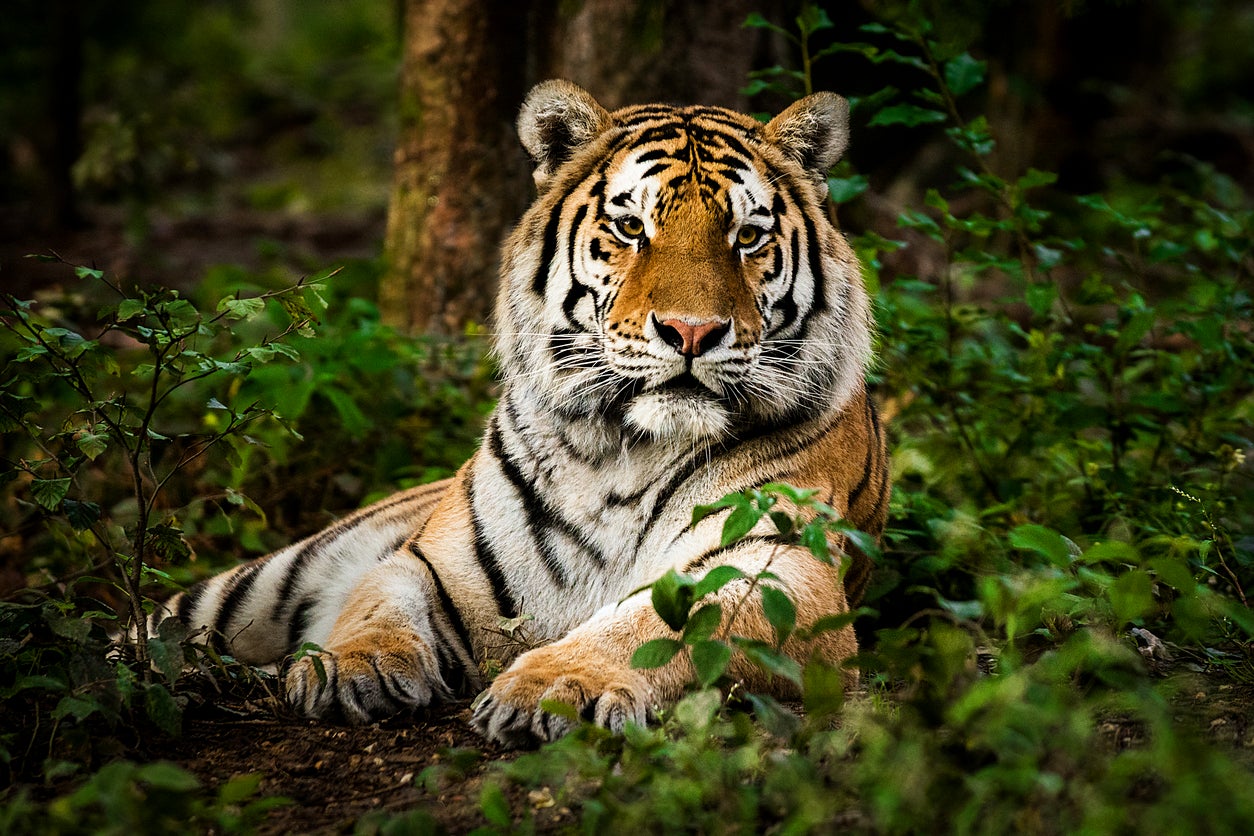India is translocating some of its big cats to Cambodia as Project Tiger completes 50 years next month
Cambodia has identified at least 90 acres of forest land at its Tatai Wildlife Sanctuary for the tigers

Your support helps us to tell the story
From reproductive rights to climate change to Big Tech, The Independent is on the ground when the story is developing. Whether it's investigating the financials of Elon Musk's pro-Trump PAC or producing our latest documentary, 'The A Word', which shines a light on the American women fighting for reproductive rights, we know how important it is to parse out the facts from the messaging.
At such a critical moment in US history, we need reporters on the ground. Your donation allows us to keep sending journalists to speak to both sides of the story.
The Independent is trusted by Americans across the entire political spectrum. And unlike many other quality news outlets, we choose not to lock Americans out of our reporting and analysis with paywalls. We believe quality journalism should be available to everyone, paid for by those who can afford it.
Your support makes all the difference.India is translocating some of its tigers to Cambodia where the tiger population has become extinct, according to a memorandum of understanding signed between the two countries.
Following the translocation of African Cheetahs from Namibia in September last year, India signed an MoU with Cambodia in November, according to news reports, to assist it with “all technical details and knowledge’’ regarding the reintroduction of tiger in the country.
Cambodia has reportedly identified at least 90 acres of forest land at its Tatai Wildlife Sanctuary in the Cardamom rainforest to welcome tigers from India.
SP Yadav, chief of the National Tiger Conservation Authority [NTCA] told the media on Friday: “We have constituted a technical support group which is advising Cambodia to achieve certain levels of standards with respect to staffing, prey base, habitat and protection. Once these are achieved, further action will be taken.”
However, the number of big cats to be translocated to the Cambodian habitat remains unclear.
The last time a tiger was spotted in Cambodia was more than 15 years ago.
Mr Yadav also didn’t clarify the exact date of the translocation of tigers from India. However, reports suggested that Cambodia is expecting tigers towards the end of this year.
“The translocation of our tigers to Cambodia is under consideration. This has never been done in India before, although we have been translocating tigers within the country as and when it has been required,” Mr Yadav added.
“For instance, we will be translocating tigers from Corbett [Uttarakhand], which has the largest tiger population in India, to Rajaji National Park in the same state. If we finally decide on translocating tigers to Cambodia, it will be done based on IUCN [International Union for Conservation of Nature] protocol,” he added.
In India meanwhile, Project Tiger — which was launched in 1973 at the Jim Corbett National Park — completes fifty years in April this year.
Indian prime minister Narendra Modi will release the new tiger census on 9 April as well. According to the last census, India has 2967 tigers. And it has been reported that tiger numbers have annually been increasing by about six per cent since. The numbers in this census are expected to be above 3500.
India harbours more than 70 per cent of the global tiger population.
“We will have to look at many factors before taking a decision. To begin with, we have to verify whether the reasons for tiger disappearance in Cambodia have been addressed, whether they have the requisite facilities and infrastructure to support the tiger,” Mr Yadav said.



Join our commenting forum
Join thought-provoking conversations, follow other Independent readers and see their replies
Comments